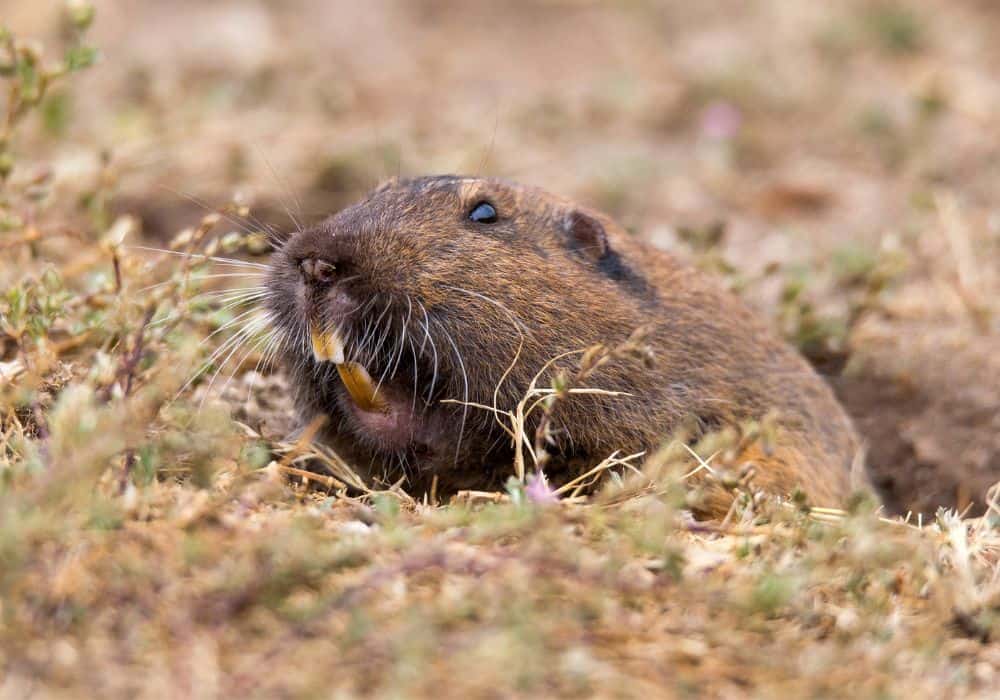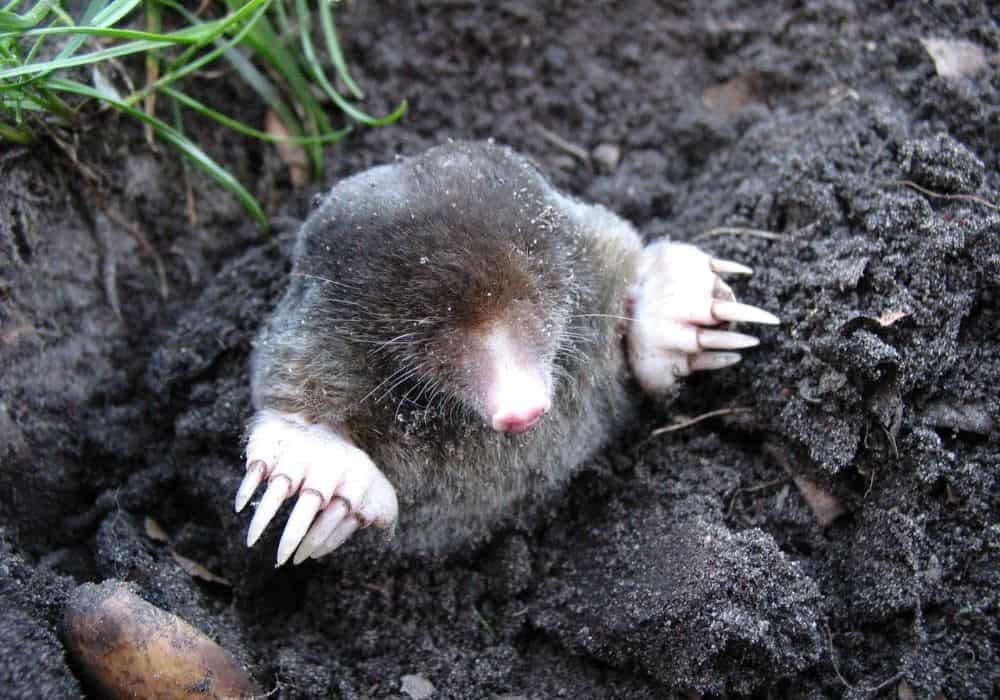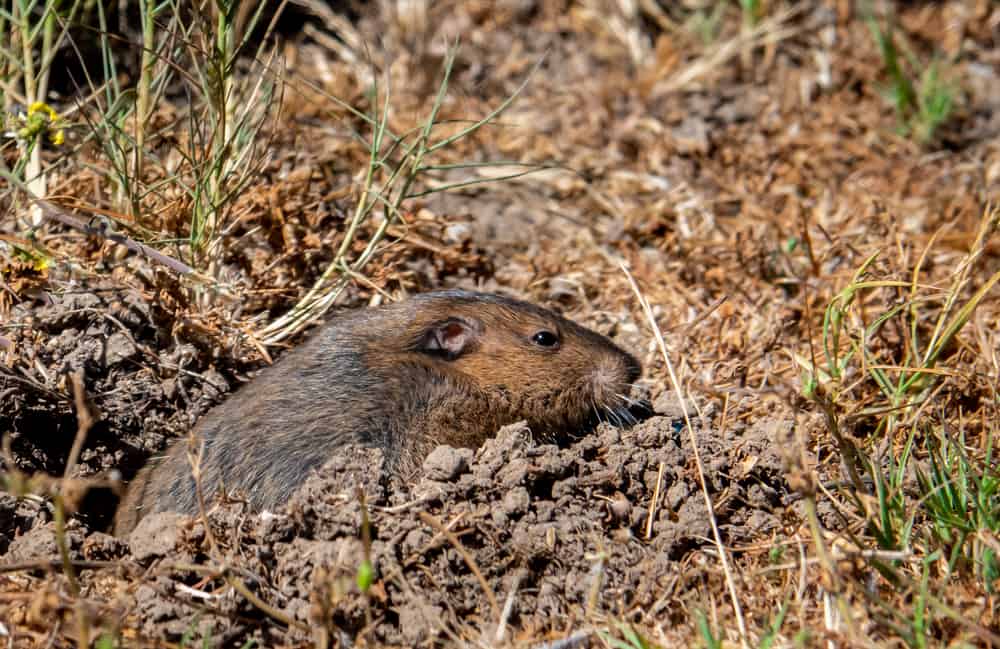Moles and gophers can either be little critters you’re happy to share your space with or furry pests that wreak havoc. This may change depending on your opinion, but there’s evidence both ways.
If you fall into the latter category, you’ll be happy to learn there are plenty of home and commercial remedies for dealing with both animals. This list may change depending on whether you’re dealing with a mole or gopher, but there are plenty of solutions for both.
In this guide, we explain how you can identify what has moved into your yard and some appropriate methods for removal. While these include some commercial solutions, most home remedies are enough to get rid of your unwanted visitors.
Moles vs. Gophers
Moles and gophers have plenty in common. They’re both small mammals that burrow and build intricate tunnels for food and shelter, but they have vastly different appearances and habits that make it easy to figure out what you’re dealing with.
Moles are smaller, about 6 to 8 inches long, and belong to the shrew family. They have hairless, pointed snouts and tiny eyes covered by fur. Their internal ears are also covered by soft brown or grayish fur.
The easiest way to identify a mole is by its large forefeet. These wide paws feature webbed toes and can easily dig tunnels through your yard. The back feet are much more narrow and have slender claws to push the dirt behind them.
Gophers are about twice the size of a mole, usually around 12 inches long. While they also have long claws in the front, they lack the paddle-footed appearance of the mole. You can also easily see their eyes and ears, as well as 4 large incisors.
What Attracts Them
Moles are insectivores, meaning they’re drawn to your yard by the grubs crawling around underground. Because of this, they don’t cause as much damage as gophers might (especially in a garden).
Gophers are herbivores that leave little behind. They eat any greenery they find, from hydrangeas to trees, roots, and vegetable gardens. Root vegetables like potatoes and carrots seem to be a favorite, but they’re not too picky.
Mole Mounds vs. Gopher Holes
It’s easiest to identify the holes from the mess they leave behind. Moles tend to leave complete mounds around their entry and exit points, while gophers leave behind crescent-shaped mounds and plug the holes.
The cone-shaped mounds of moles are usually only 2 inches in diameter at the surface. They’re farther apart than gopher holes (about 6 feets) and often push out clods of dirt as they tunnel through coarse soil. They also create surface tunnels about 16 to 18 inches deep, presenting as raised ridges in your yard.
Gophers create more intricate burrow systems anywhere from 4 to 18 inches below the surface. They prefer firm soil that can support the main burrow and lateral burrows they create.
Gophers also create more holes than moles, so they’re easier to notice. While a mole may excavate a couple of mounds, a gopher can build over 200 in a single year. The gophers are also more likely to dig through cables and piping, which can quickly catch your attention.
Remedies that Work for Moles and Gophers
While moles and gophers are quite different from each other, you can approach their presence in similar fashions. The most popular remedies that work for both moles and gophers include:
- Traps
- Baits
- Burrow blasters
- Trenches
- Lawn care efforts/artificial droughts
These methods don’t consider why the mole or gopher is in your yard, so they may not be ideal for preventing another small creature from moving in. Make sure you keep an eye out for any new occupants in case this becomes a recurring issue.
1. Traps
Traps include both lethal and humane options. At the very least, they catch the mole or gopher as they exit their tunnel system and allow you a chemical-free way of dealing with the issue.
In the best situation, you would place a trap over every exit and entry point. If this isn’t feasible (and it often isn’t), place the trap where the critters are most active.
For moles, you can identify the active runway by poking holes into the top of the soil near the hole. They will repair it in a few days if they’re currently using it. Gopher holes plugged with freshly upset dirt are more likely to be active than those with crusty sediments.
Wear gloves when handling the traps so you don’t tip them off. For gophers, make sure you cover the trap with black plastic or burlap so it doesn’t seem like their hole was disturbed.
Early spring is the best time to trap both moles and gophers. They’re more active during this time, and it catches them before they can birth more animals to occupy your yard.
Make sure you check the traps often so you can dispose of or relocate the animal once you catch it.
2. Baits
Baits come in three varieties:
- Grain
- Gel
- Synthetic worm
Grain and gel poisons are more effective with gophers, while the synthetic worms mimic the appearance of the insects that sustain moles. These baits contain chemicals like bromethalin, strychnine, or zinc phosphide that are fatal once consumed.
The small animals usually die within 12 to 24 hours after eating the bait. Unlike lethal traps, you don’t need to worry about disposing of the body because they’re often underground.
On the other hand, this opens the door to contaminate the ground and grass. Pets like dogs or cats can also dig deep enough to retrieve the body, so the risk of secondary poisoning should be considered.

3. Burrow Blasters
Also known as detonators or gophers flares, these products fill the tunnels with a mix of propane and oxygen and quickly suffocate the inhabitants.
The instructions vary depending on the brand. While these are lethal, they’re also poison free (eliminating any risk of secondary poisoning). The blasts can also be strong enough to take out the whole tunnel system, limiting the opportunity for reinfestation.
4. Trenches
Trenches are a great tool for long-term and comprehensive critter control. They interfere with the construction of tunnels into your yard and cover moles and gophers as well as other burrowing animals.
To use a trench to get rid of moles and gophers:
- Dig a hole roughly 2 ft deep, 6 inches wide, and however long you need.
- Line the trench with wire mesh or hardware cloth (ideally with holes less than ¾ inches wide)
- Fill the trench with rocks
This is time and labor-intensive to start, but it pays off in the long run.
5. Lawn Care and Artificial Drought
Learning how to tailor your lawn care for critter control is one of the most effective home remedies for any situation.
Moles and gophers feel safe when they have plenty of cover. Keeping your grass mowed short, manicuring your garden beds, and eliminating stacks of wood and debris can make your yard less appealing.
You can also cut back on watering to make the area less hospitable. Excess moisture will attract the bugs that moles feast on. An artificial drought can keep the dirt on the dry side without compromising lawn health, making it more difficult to maintain their tunnel systems.
Removal Methods for Moles

Moles usually set up in your yard because they have easy access to the bugs that they love. If you know you’re dealing with moles, the best approach involves eliminating their food sources and utilizing repellent materials.
Cutting back on watering can decrease earthworm activity that moles go crazy for. You can also control your grub population using natural predators like beneficial nematodes and milky spores.
For even faster results, use targeted insecticides to eliminate the moles’ food source.
Moles also hate strong smells and flavors like peppermint oil, castor oil, or anything spicy. You can make your own repellent by mixing your repelling scent with some dish soap and a gallon of water and then soaking all the tunnels and entrances in your yard. You can also soak cotton balls in the liquid and drop them in the holes.
When using repellents, make sure you reapply often. Once a day isn’t too much, and it’s better to err on the side of caution so they don’t adapt to your attempts at eviction.
Removal Methods for Gophers
Unlike moles, gophers will eat any greenery in your yard. You can try to eliminate their food source by opting for a rock garden or water garden, but those who want to keep their plants may need better protection.
Installing an underground fence is essential to prevent gophers from going after the roots of your plants. Ideally, the fencing should go at least 12 inches underground and angle away from the plants (so they don’t realize they can just dig deeper).
You can also use raised garden beds or gopher baskets to make your plants inaccessible.
Gopher spurge (Euphorbia lathyris) is a common recommendation to repel the critters, although daffodils, marigolds, and oleander are often right behind. Purchasing the plants from a nursery would allow you to use them immediately to ward off your new occupants.
Gophers also dislike noise. Wind chimes may be enough to annoy them away, but others recommend wrapping a battery-operated radio in a plastic back, turning it on, and shoving it into the tunnel to chase them away.
Conclusion
If you have enough land, you may not even need to get rid of the moles or gophers in your yard. This is more so true for moles, who can take care of pests and aerate the soil without leaving holes everywhere you step.
When getting rid of the moles and gophers, remember to:
- Choose a method that works for your yard as well as your family
- Have a plan to prevent other from moving in (destroy the existing tunnels and holes)
- Address what drew them in in the first place
While this should be enough to help you handle your miniature mammal problem, feel free to ask any further questions in the comments below!
